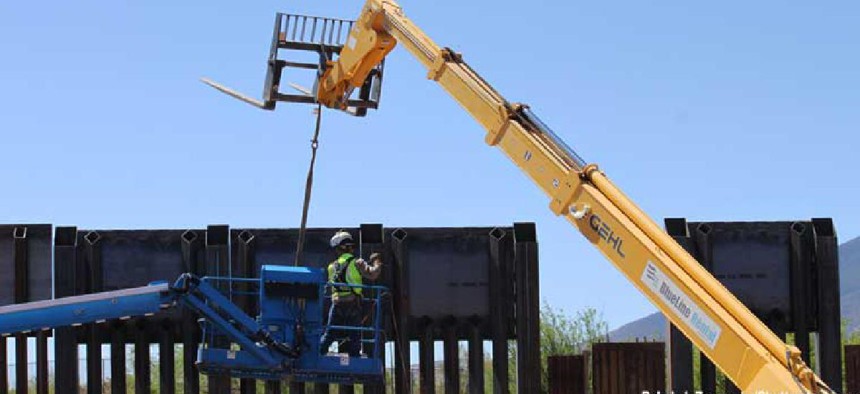Border tech bypassed to push ‘outdated’ solutions for wall, IG says

Rather than assess technology systems and manpower alternatives to securing the border, Customs and Border Protection pushed construction of physical barriers, according to a new report from the Department of Homeland Security’s Office of Inspector General.
In its efforts to construct a wall on the U.S.-Mexico border, Customs and Border Protection pushed past possibly more effective and inexpensive technology and manpower security alternatives, according to the Department of Homeland Security’s Office of Inspector General.
A July 14 report said CBP’s analysis phase of its wall acquisition program beginning in 2017 emphasized construction of physical barriers and didn’t assess systems and plans that could help the agency get “operational control” of the Southern border as directed, the study found. Instead, the agency “relied on prior outdated border solutions to identify materiel alternatives for meeting its mission requirement… and did not use a sound, well-documented methodology to identify and prioritize investments in areas along the border that would best benefit from physical barriers,” the IG said.
CBP’s analysis, said the report, didn’t meet 2017 congressional requirements for “a risk-based plan for improving security along the borders of the United States, including the use of personnel, fencing, other forms of tactical infrastructure, and technology.”
In February, in his defense of the Department of Homeland Security fiscal 2021 budget request of $2 billion for construction of 82 miles of new "border wall system," acting Secretary Chad Wolf told the Appropriations Committee’s Homeland Security Subcommittee that sensors, cameras, advanced analytics, drones, non-invasive screening – are critical elements of layered border protection.
The technological capabilities that accompany the wall, Wolf said then, "are night and day" compared to the old landing-mat fence put in decades ago. "Lights, cameras, radar and fiber-optic" technologies are making a difference now, he said.
The IG report recommended DHS require CBP to conduct a new independent analysis of alternatives to identify the most appropriate and effective solutions to get complete operational control of the southern border. It also urged DHS to determine whether an implementation plan for acquiring and maintaining operational control of the border is needed. It recommended the Border Patrol revise how it prioritizes investments in border security needs and improve how it uses data in its acquisition decision support tools.
This article was first posted to FCW, a sibling site to GCN.





